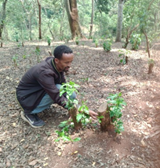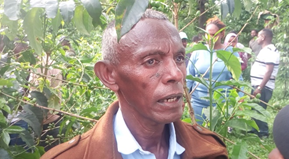
ADDIS ABABA– Farmers in Kelem Wollega Zone of the Oromia State attributed the current increase in coffee production to the zonal agriculture bureau’s professional and technical support.
Sedi District Coffee and Tea sector Head Holika Abdisa told the Ethiopian Press Agency (EPA) that coffee is the main source of livelihood for the local farming community and it is being produced in around 27 rural and three urban kebeles.
The majority of the farmers are leading their life through coffee production. The ‘Aso Cluster’ which is located in Awetu Gendasa kebele rests up on 20 hectares of land and holding over 40 farmers, he added.
More than 70 percent of the farmers in the kebele have ground coffee. The work of increasing the productivity of old coffee trees by removing two to three branches and cutting the coffee has been done extensively, Holika added.
“This experience has been applied to model farmers through various trainings and their productivity has increased. There are model farmers who were awarded medals in 2020.”
Resident of the Awetu Gendasa Kebele,

Dale Sedi District of the Kelem Wollega Zone and a model farmer Terefasa Fite owns five hectares of coffee plantation. Previously, the farmers used to produce maize.
According to Terefasa, Awetu Gendasa Kebele is model in coffee production and the farmers apply different types of mechanism to increase production including renewing the coffee, getting rid of the damaged seeds and do other related activities.
“We have not only improved our livelihoods but we are also able to provide our families and children good life and better education due to the increase in the area’s coffee production.”
Holika mentioned that the district has undertaken several activities to increase coffee product and productivity by mobilizing the farmers. Efforts are also being put towards new technology implementation.
The coffee and tea development workers of the district have demonstrated that two to three of the old coffee trees will be removed from the top and the other will be cut with the scissors prepared for this purpose to increase coffee production.
“To make the old coffee more productive in a new way, two to three branches are removed and the other one is pruned from the trunk. It is recruited three times a year. It is able to increase productivity after weeding and composting.”
The model farmers, who have been conducting their activity per to the manual given by the district agricultural bureau, have held experience sharing activities and in this manner they are managed to get 9-12 quintals of coffee per hectare, he remark
BY BETELHEM BEDLU
THE ETHIOPIAN HERALD THURSDAY 27 JUNE 2024





